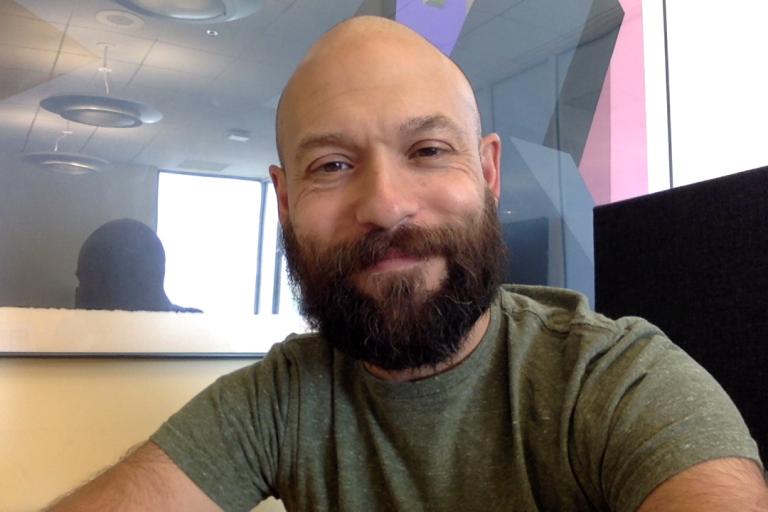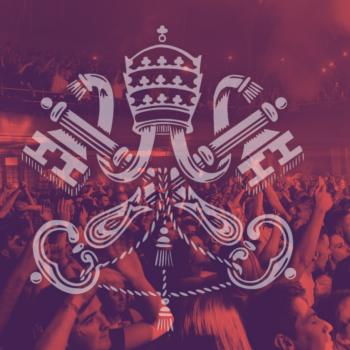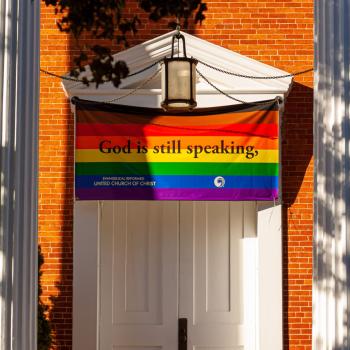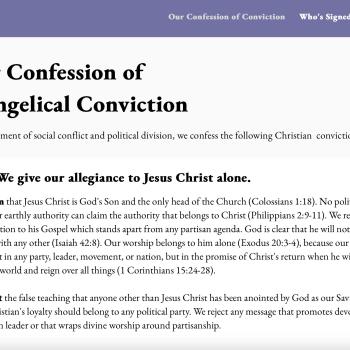In the first article in this Christmas series, I argued that Christmas is the Incarnation of God. This makes the holiday of Christmas a commemoration of the eternal, infinite, good and holy God becoming a finite, concrete, good and holy man in Jesus of Nazareth. In part two, I argued that this “Christ event” is also something that takes place in history. By taking place in “history,” I mean it takes place in the very same space-time reality you and I occupy. Thus, the metaphysical event of the incarnation is also the historical event of Jesus’ birth. In this next set of entries, I will try to point out a few philosophical implications of God becoming man.
Some Philosophical Enigmas
The history of philosophy could be described as a history of thinking hard about certain human puzzles, and trying to arrive at an explanation for the way things really are given those puzzles. Some of those puzzles are ontological. They have to do with what there is, how things exist, how those things change over time and what causes them to change if they do change. Others have to do with knowledge, or how we know things and if we can have good reasons for claiming to know them. Then there are issues of how to think well, so that whatever conclusions we might come to, we can show they were arrived at in a logical and orderly manner. Finally, there are questions of living in the world together, in a society, and what that means for each human person and for the group of humans called ‘humanity.’
Within each of these areas of philosophical thought, commonly referred to as: metaphysics, epistemology, axiology, and morality, there are many subsets of puzzles. For example, in metaphysics there is a long-standing debate over whether there are only particular things– concrete, individual objects– or whether there are things called universals–entities that concrete, individual objects share in or exemplify. In epistemology, there is the problem of what makes a belief justified, or reasonable to believe, and how evidence plays a role in justify a belief. In logic there is a continuous, historical development of the application of universal rules of systematic and mathematical reasoning to various philosophical issues. Finally, moral philosophy is where things get particularly contentious. It is in moral philosophy where the abstract and theoretical often meet the concrete and practical. Moral thinking and the application of moral thought is where human beings live or die, thrive or perish.
In this short blog post, I will have to be very selective about which philosophical enigmas to address, and how the incarnation of God, and the entailments of God’s incarnation, may provide an answer to the philosophical puzzle in question. This post is not a rehearsal of natural theology, however, since I am presupposing God’s existence, His incarnation in Jesus of Nazareth, as well as Jesus’ being raised from the dead. For those skeptics of mine (and you know who you are), who want to engage in the perennial debate over whether God is real, I would recommend this recent, accessible and rigorously thought out book by Christian philosopher, Joshua Rasmussen, How Reason Can Lead to God. First read that book, then get back to me with your thoughts on natural theology.
Puzzle #1: The One and the Many
One of the most puzzling questions in the history of metaphysics is the question of the “one and the many.” That is to say: Is there only one thing that exists, yet which is presented to us in various, seemingly distinguishable ways? Or, are there many particular things, each merely presented to us in a unified way. This “unification” may be on account of some mysterious capacity of our own mind, but the reality is there are only separate, individual things and no such thing as “everything.” A subset of this question is the relationship of any part of a specific thing to its whole. We can consider a particular example of this problem.
Gottlob Frege, the 19th century German mathematician, used a deck of cards to illustrate what is often called “mereology” in philosophy, or the study of part-whole relations. Frege posed the simple question of how 52 cards can also be at the same time one thing–a deck. One solution to this problem might be to say there are actually 53 things, 52 individual cards and one deck, even though the deck is entirely composed of the individual parts, the cards. However, this answer seems problematic, for it would be simpler to just say there are 52 individual cards, and “the deck” does not really exist. “The deck” is merely a linguistic convention that stands in for 52 things, the cards. But this too seems problematic if we take physics seriously. For at the level of particles, each of the 52 cards is itself made of millions of atoms. Do we now say that the cards themselves do not exist, but only the atoms? And then, or so it might go, what about those subatomic particles that make up each atom?
This is a real paradox. Of course where the paradox of the one and the many becomes especially poignant is when speaking about society and its members. The ancient Greek notion of the “polis” or body politic, captured this sense of how individual persons could exist and subsist as one city, or one people. In layman’s terms this is the problem of individuality versus community, or how each member of society can retain their individual identity within a larger, corporate identity. For there are clearly two dangers involved here. If one emphasizes the corporate identity too much, then there is a uniformity that ensues whereby the uniqueness of the individual is lost. Think about the stormtroopers in Star Wars, or the Borg in Star Trek. On the other hand, where individuality is emphasized to the detriment of the corporate identity of the city (or nation), then unity of vision and action becomes untenable, and the city or nation is lost. Here every man and woman is an island unto themselves, since no one person is exactly the same as another.
The Answer to “The One and the Many”: Trinity and Communion
Christianity solves this problem of “the One and the Many” in virtue of the doctrine of the Trinity. The answer is the nature of God Himself. God, being triune, is the real, ontological ground of the one and the many. There is one God who is three persons. The three persons of the one Godhead coinhere in each other. Mutually indwelling each other, therefore, the three Persons are perfectly distinct in their personhood, yet perfectly united in their divinity. The solution to the paradox of mereology is, as such, not something that can be figured out by finite minds, because finite minds cannot grasp the perfect. God, the ground of all Being, being perfect, is perfectly three in one.
Philosopher Michael Rea gives a reasonable example of this using the via analogia, or way of analogy:
The story begins with an example: an artistic building contractor fashions a marble statue that is to be used as a pillar in the building he is constructing. So he has made a statue; he also has made a pillar. It would be strange to say that he has made two material objects that are simply located in exactly the same spot at the same time (though many philosophers do in fact say such a thing).
What we are inclined to say is that the statue and the pillar are one and the same material object, not two. And yet they are distinct. Surface erosion will destroy the statue without destroying the pillar. Internal corruption that preserves the surface but undermines the statue’s capacity to support the weight of a building will destroy the pillar but (if the statue is removed from its position as a load-bearing structure) will not destroy the statue. Thus, what we want to say is that the statue and the pillar are the same material object, even though they are not identical….
In the case of our statue, then, we have two complex properties—being a statue and being a pillar—both had by the same underlying subject, some undifferentiated matter. This gives us two compounds, a statue and a pillar. Each is a substance. Thus, the statue and the pillar are emphatically not mere aspects of a common substance. They are not properties or relations or anything of the sort. Furthermore, each is distinct from the other. But they are, nevertheless, the same substance.
Excerpt From: Thomas P. Flint & Michael Rea. “The Oxford Handbook of Philosophical Theology.” Apple Books. [emphasis original]
Rea then applies the analogy to Father, Son and Spirit, showing that God is three distinct substances, i.e., being the Father, being the Son and being the Spirit, yet also one substance just as the pillar/statue is two distinct substances and one substance. What plays the role of the “undifferentiated” material in the Trinity is the divine nature of God. Far more could be said here, but at this point Rea hesitates to go further. Why? Perhaps because there is a reality we can come close to describing, but whose true nature will always escape our powers of reason. Nevertheless, it is the reality of the transcendent, Triune God that solves the problem of any immanent instance of the one and the many.
It is this metaphysical fact, the metaphysical fact, that can only be known through revelation. The eminent theologian, Fred Sanders, explains the nature of the trinitarian revelation:
But the doctrine is also, in another and higher sense, more revealed than most doctrines. The root idea of revelation is not verbal announcement but the unveiling or disclosing of something that has been present, though concealed. In order to inform us that the Father has a Son and a Holy Spirit, the Father sent the Son and the Holy Spirit in person. The triunity of God was revealed when the persons of the Trinity became present among us in a new way, showing up in person and becoming the object of our human observation.
The apostles testified that what they saw with their eyes and touched with their hands was “that which was from the beginning,” because it “was with the Father and was made manifest” to them (1 John 1:1–3)….the doctrine of the Trinity is more than just another doctrine on the list of true things we have been taught by God about God. It is God’s self-revelation by way of presence in a more direct, intense, and personal way.
Excerpt From: Fred Sanders, Michael Allen & Scott R. Swain. “The Triune God.” Apple Books.
However, it is not only that God’s triune nature answers the paradox of the one and the many. The incarnation of God in Jesus and His redemption of our human nature through His atoning sacrifice on the cross and His bodily resurrection from the dead and God’s sending of the Holy Spirit, all conjoin in a theological and ontological aim, namely, the communion of all believers. This “polis” (city) of God consists of every tribe, tongue and nation (Rev 7:9-17). Its unity is not found in the will of its individual members, but in the Spirt of God which binds them together (1 Cor 12; Rom 12:3-8; Eph 4:1-16).
Unlike in some Eastern religions, the personal identity of this body’s individual members, just like the persons of the Trinity, are not extinguished in uniformity or sameness. The individual Christian is not eliminated in the void, nor does it meld into the “One,” or become but a cog in some great machine, like the “Borg.” The communion of saints, mirroring the perichoretic nature of God, is the perfect society–the subsistence of “a great multitude that no one could number” (Rev. 7:9) in one perfect harmonious city, the new Jerusalem (Rev 21). What no body politic can do, God does and will ultimately do: uniting the one and the many through the power of His Spirit.
For a more academic treatment of the Body of Christ as the perfect coinherence of individuals in community, see my article in the Luther Rice Journal of Christian Studies.
Conclusion: Christmas Offers the Hope of Genuine Unity in Diversity
As our current version of American culture agonizes under the weight of the problem of “the one and the many,” especially as it applies to our social structures, personal interactions and national identity, the hope of Christmas is also the hope for an answer to the problem of unity in diversity. The continuous realization that we cannot find unity among what now appears to be an endless construction of social identities is leading us to a precipice. We will inevitably fall off this cliff, if we do not choose to see ourselves in light of some greater, unifying principle or Person.
The Christian hope is that Christ assumed a universal nature, a human nature that each individual person shares in, regardless of how diverse their “accidental” characteristics, be they biological or social. Christ did not incarnate 117 billion times (the rough estimate of the earth’s population over time) to save the souls of men. Instead He came one time, for 117+ billion people. At the end of time, some, perhaps many, of those 117 billion will be finally united in their divine status as the adopted sons and daughters of the King. This is a true diversity that is not only worth celebrating, but that one should really not miss out on. This is a DEI clause that you really do want to sign, lest you find yourself alone and isolated from the true, and eternal, community of love. Finally, it is not a clause you have to sign in your own blood, it has already been signed for by the blood of the Lamb.

















